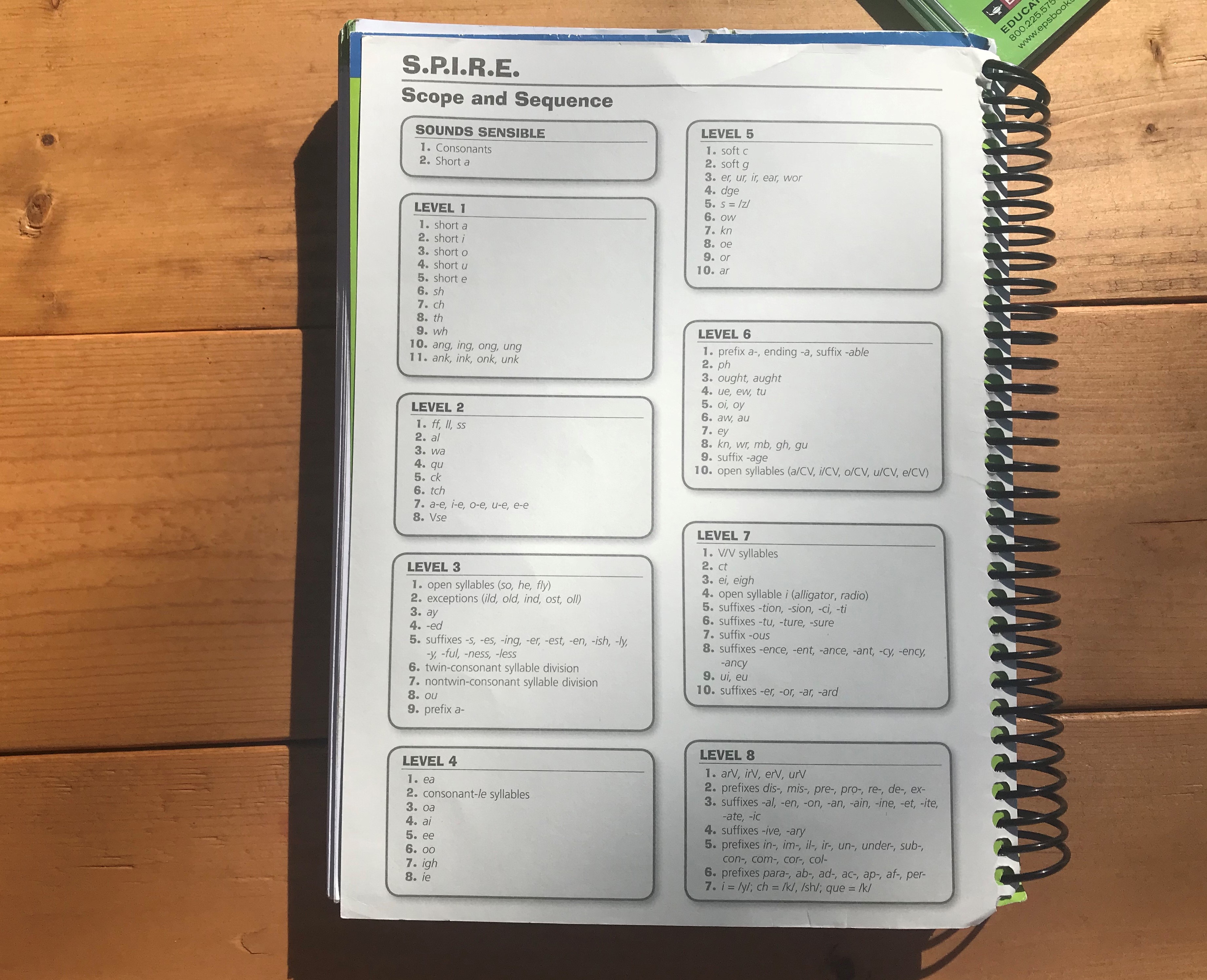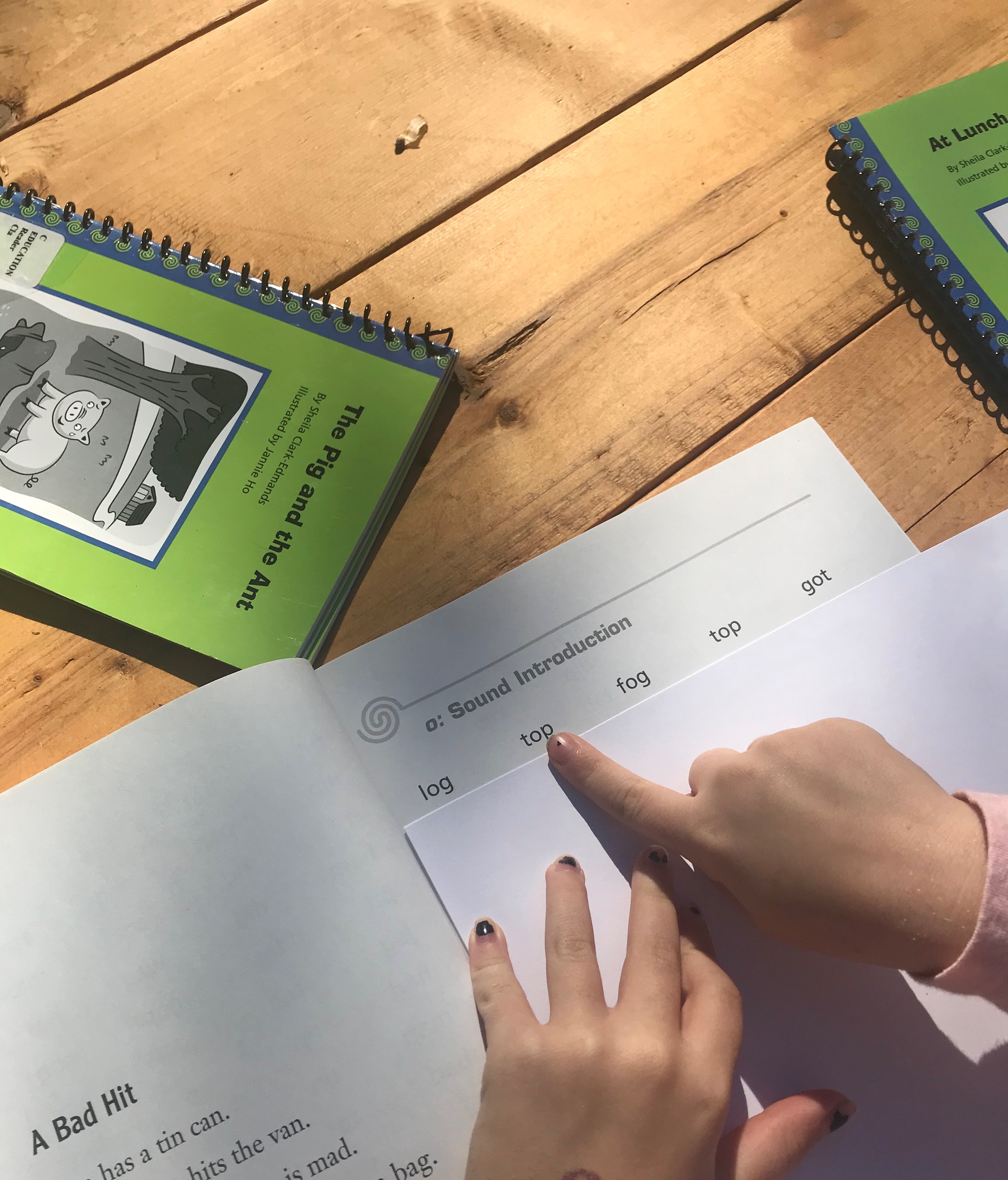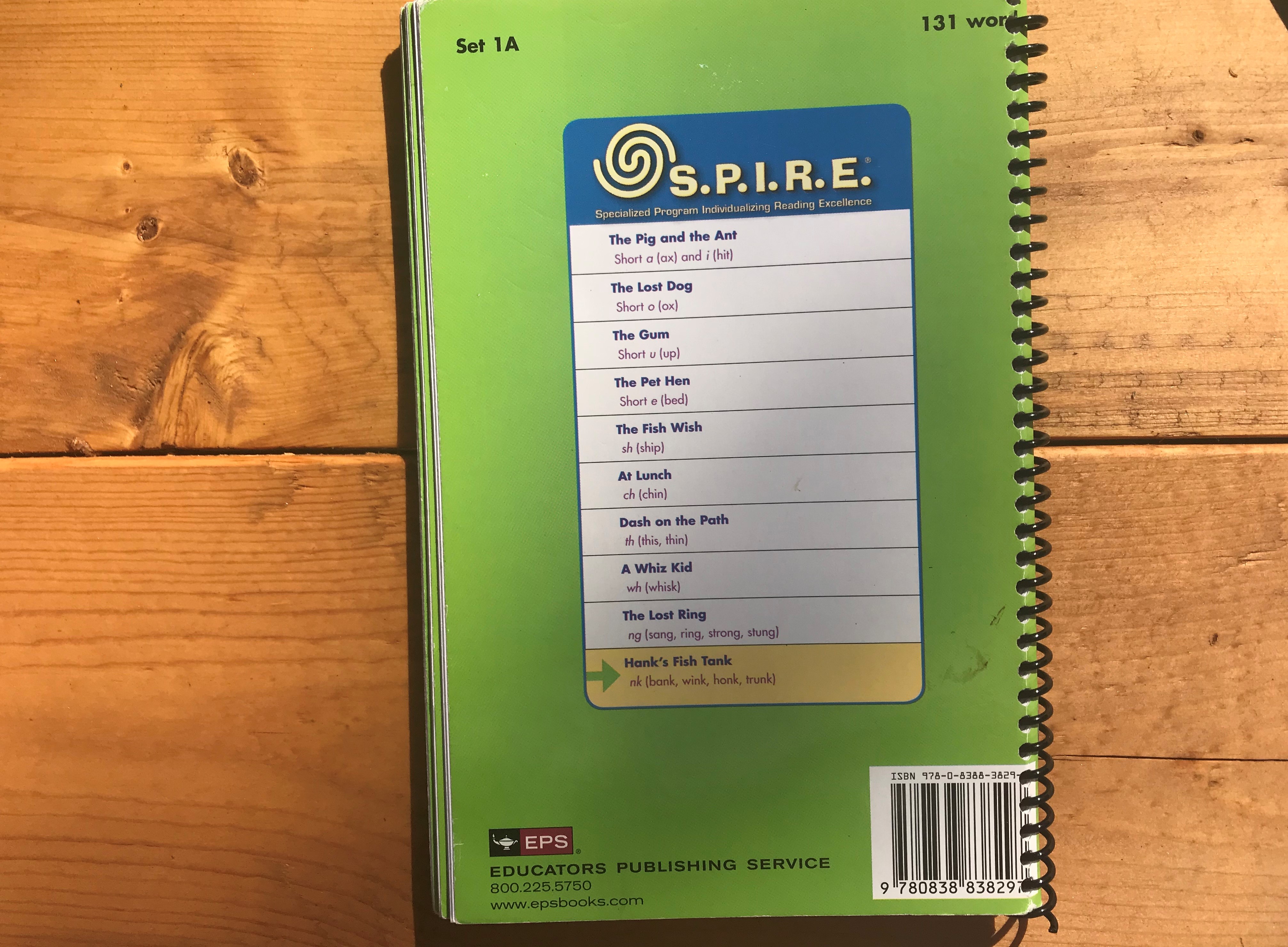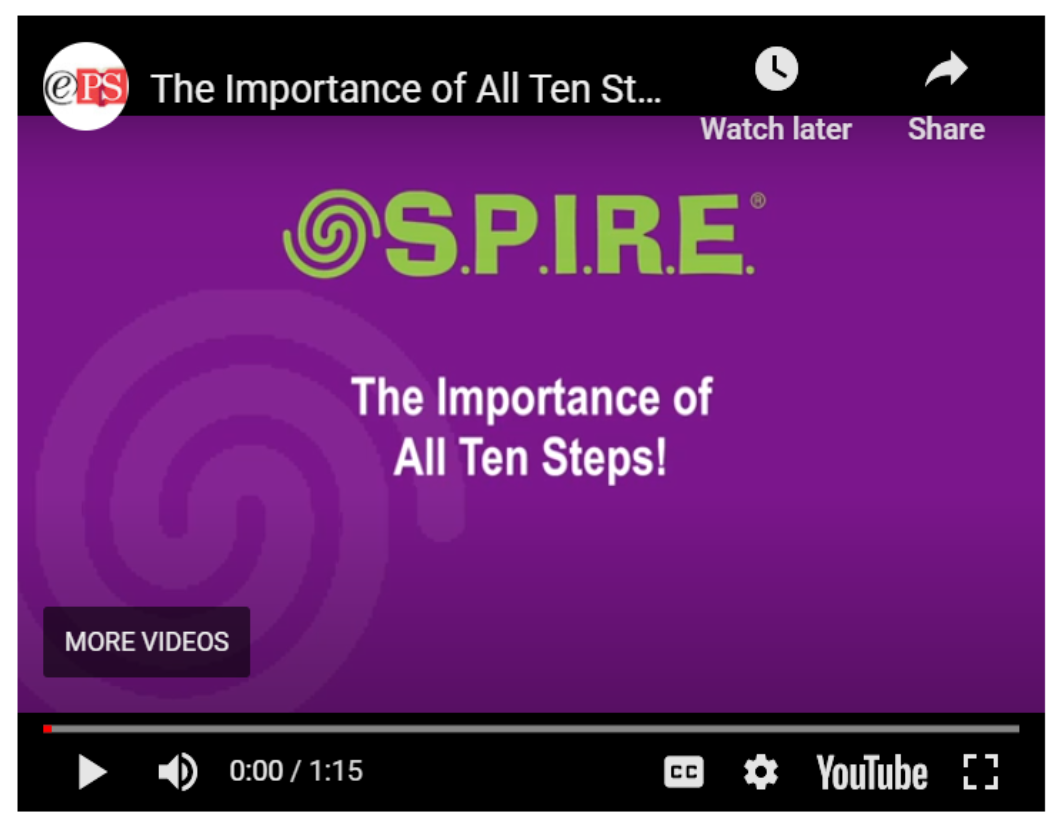- Emily J.
- Wednesday, January 06, 2021
Learning to Read
Learning to read is the most important academic skill in a child’s life. It is the thread that weaves together knowledge and critical thinking and creates limitless opportunities for independent learning. Want to visit France? Read about it in a book. Want to travel through time? Read about it in a book. Want to learn quantum physics? Read about it—well, you get the idea.
Reading, however, is a skill that is not easily acquired by some. It takes time and practice, a good teacher, and thorough curriculum. Neuroscientists have closely examined the reading brain and discovered two things: how we learn to read and how to help those who cannot. The process takes time and diligence for both you and your student, but the payoff is well worth it. The library has all the materials to make learning to read possible by offering a variety of reading curriculums.
These carefully curated materials offer the gold standard of reading instruction that will meet the needs of beginning or struggling readers. The collection is based on the Orton-Gillingham method—which might be a new concept for you, but don’t worry, we will walk you through the process.
Choosing the best reading curriculum to suit the needs of your students can be a daunting task. We are here to help you. We’ll take a deep dive into each of the Orton-Gililngham based reading programs in the Education Studio’s collection, so you can decide which program works best for you and your family. Each program has distinct differences in the style, format, and layout, but all check the boxes for effective lessons that adhere to the OG principles. Scroll down to the bottom to read more about the OG principles.
Reading expert Linda Farrell: How we can help struggling readers.
SPIRE: An Overview
SPIRE reading program is based on the Orton-Gillingham approach, and it is highly respected among classroom educators. It is designed specifically for struggling readers with the teacher at the center of instruction. Present and former educators will find this curriculum user-friendly. Those without a background in education may take a moment longer to get accustomed to the format. However, the payoff for learning the program will be well worth it.
While some OG programs are easily adapted to whole class instruction, SPIRE is intended for small groups and one-on-one instruction. Lessons are explicit—and move along at a steady pace. Keeping the motto “as fast as you can, but as slow as you must,” at the core of the program. Students, especially struggling readers, will find comfort from the regularity of each lesson and knowing each new concept will be covered thoroughly.
Each lesson in the SPIRE program contains 10 steps that include instruction, reading, and spelling. 10 steps may sound like a lot at first—but each section is meant to be quick. The lesson in its entirety should take approximately 50 minutes and it does not need to be completed consecutively. It’s okay to take a brain break and hop back in later.
Manipulatives
One key component of the multisensory instruction is using hands-on materials. Both tactile experiences and kinesthetic movement create and reinforce important learning pathways. The SPIRE program has magnetic boards, word cards, and phoneme cards available for purchase.
With a little creativity these materials can be easily replicated from post-it notes, colored index cards, and magnetic strips. Elkonin boxes are a multisensory tool that can be made from a sheet of paper, a pen, and small objects (like coins or paper circles) Try these Elkonin boxes from Reading Rockets.
Remember, if you are short on time and on a tight budget, many of these can be created for free. Skywriting and tracing fingers along a textured surface can be just as useful and don’t require any additional materials.
Watch this video to see Elkonin Boxes in action.
Scope and Sequence
SPIRE scope and sequence is slightly different than other structured literacy programs. Level 1 focuses on students mastering the short vowel sounds and word families. Most structured literacy programs begin with basic consonant sounds and short vowel sounds. SPIRE level 1, however, starts with reading simple consonant-vowel-consonant words. Struggling readers will need explicit instruction to learn the consonant sounds before they begin this program. Sounds Sensible is a new SPIRE pre-reading program that lays the foundation before jumping into level 1. The only drawback is that the pre-reading kit is costly, and consists of mostly consumable materials.

The All About Reading or Preventing Academic Failure reading curriculums also provide lessons for teaching the consonant sounds. Use these curriculums to first master the consonants. Choose the program carefully because they appeal to different audiences, younger children are drawn to All About Reading, while Preventing Academic Failure appeals to older students. SPIRE can have an appeal to both older and younger students depending on the decodable readers used.
Decodable Readers
Yes, you read that correctly, SPIRE has two sets of decodable readers.
The Instructional readers with decodable stories have every reading instructor shouting for joy. Why? These books include decodable stories and handy word lists. The word lists help students practice fluency and overtime they will improve a student’s reading automaticity. The best way to use a word list is after an introduction to a new concept. The picture below shows a student practicing words that contain the short /o/ sound. Keep a stop watch handy and give students a minute to decode the words on the page. It’s important to note that you are not measuring how quickly they recall a word from memory, rather you are seeing how long it takes for them to logically think out a word. Our goal is not for a student to memorize a page of words, but to decode them. Practice the page a few times a week and note their times. You should see a slight improvement every time.

When working through each list of words, use a piece of paper to help track under each line of words. This will prevent students from losing their place and jumping across a page. Instruct them to read the words from left to right. Reinforce the idea of left to right because all books are read this way. We write this way, too.
All students benefit from these word lists, and older children might appreciate the lack of pictures. Younger students, on other hand, might appreciate the cheery pictures of the illustrated decodable readers. The stories in the instructional and illustrated decodable readers are the same. It’s up your personal preference which one you would like to use. Some children rely heavily on context clues from the illustrations, if this is the case, switch to instructional readers.
The illustrated decodable readers include the skill on the back flap of the books. SPIRE readers can be used with other reading programs for this reason.

Helpful Resources
SPIRE offers a library of resources for reading instructors, including tutorials, quick start lessons and placement tests. SPIRE, however, does not have free digital resources for students. You can find free digital resources through the All About Reading program.
The Orton-Gillingham Principles:
- Cognitive- Students use thinking skills when reading and spelling rather than memorization
- Synthetic and Analytic-Students learn how the parts (phonemes) work together to create a whole (words), and how the whole can be broken down into parts.
- Multisensory- Students use all learning pathways—visual, auditory, kinesthetic, and touch—to enhance memory and learning
- Structured, Sequential, Systematic, and Cumulative—Students are taught material in a logical order from easy to hard, from common to uncommon. Concepts are taught systematically and reviewed to strengthen memory.
- Repetitive—Struggling readers need continuous practice and review.
- Explicit and Direct—Students are directly taught concepts. I do. We do. You do.
- Diagnostic and Prescriptive—Student lessons are monitored by teacher to identify and analyze student needs.
- Emotionally Sound—Students experience a high degree of success in each lesson. They gain both confidence and skill.
Great Read Alouds
In addition to reading curriculum, the Richland Library’s Children’s Room has an extensive collection of children’s books—on every topic. Our staff is happy to help you select books for you to read together at home. Visit the Get Personalized Recommendations, fill out a quick questionnaire, and voila! books will be selected per your specifications.



S.P.I.R.E. Level 1, Reader

S.P.I.R.E. Level 1, Teacher's Guide

S.P.I.R.E. Level 2, Reader

S.P.I.R.E. Level 2, Teacher's Guide

S.P.I.R.E. Level 3, Reader

S.P.I.R.E. Level 3, Teacher's Guide

S.P.I.R.E. Level 4, Reader

S.P.I.R.E. Level 5, Reader

S.P.I.R.E. Level 6, Reader

S.P.I.R.E. Level 7, Reader


S.P.I.R.E. Level 8, Reader







